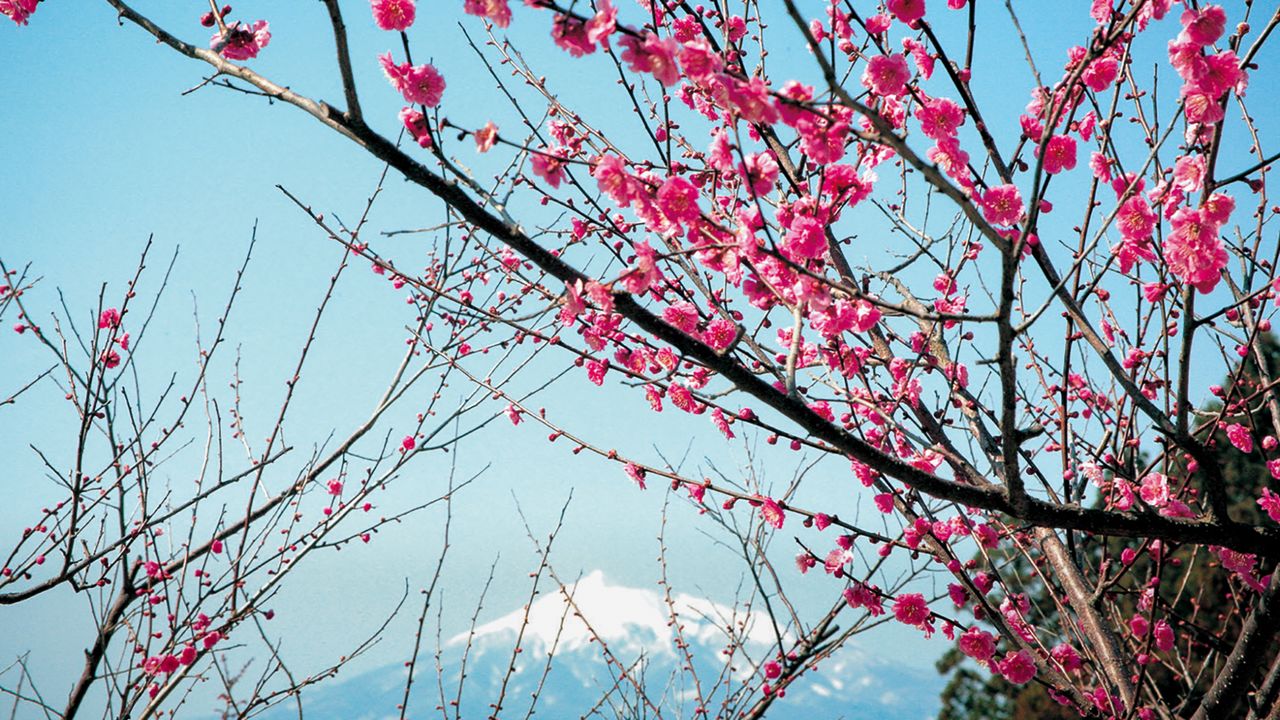
Early Spring in Tōhoku: Plum Blossoms in Aomori, Iwate, and Akita
Guideto Japan
Travel- English
- 日本語
- 简体字
- 繁體字
- Français
- Español
- العربية
- Русский
Goshogawara, Aomori Prefecture
Tsugaru Flower Center
Best viewing: late April to early May
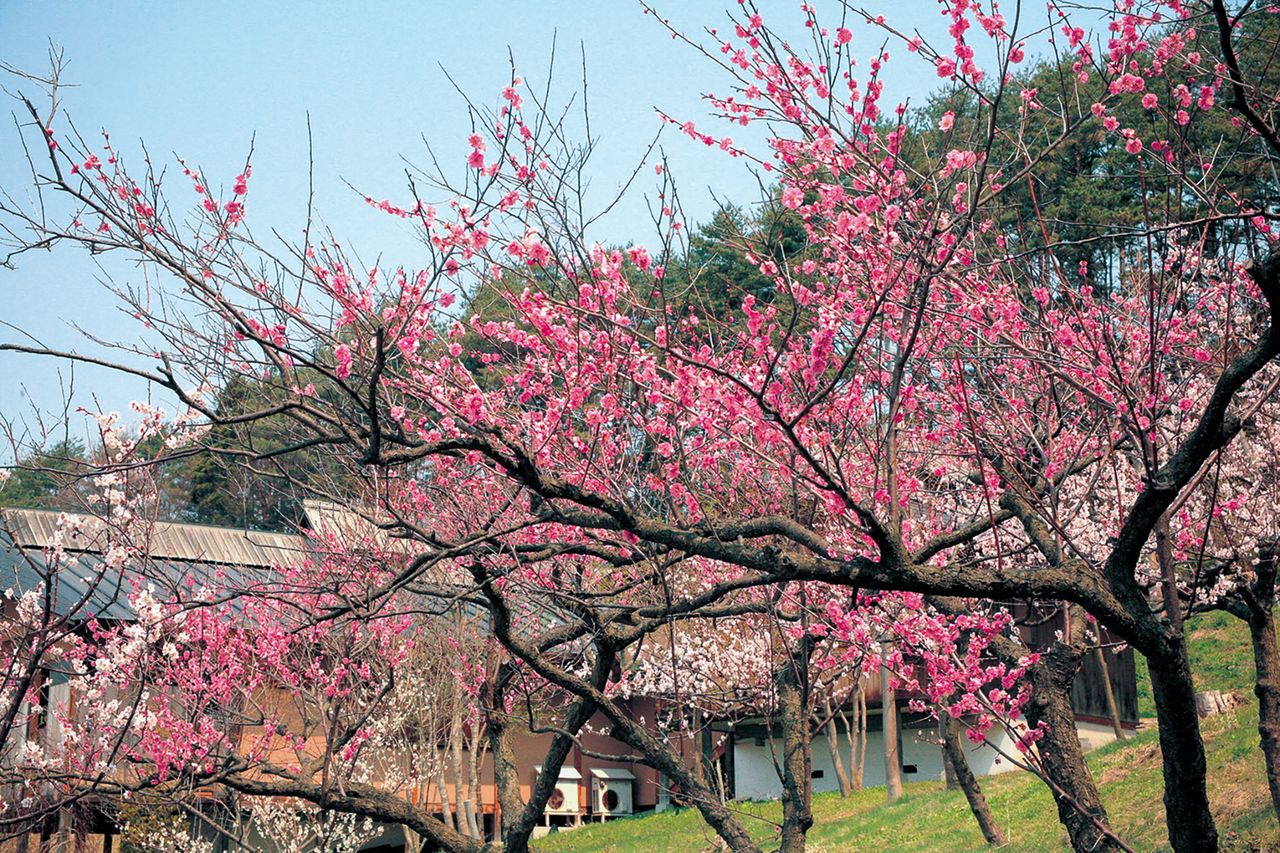
This grove of ume trees in bloom at the Tsugaru Flower Center is known as the northernmost in the country. (Photo courtesy of the Goshogawara City Tourist Association)
The Tsugaru Flower Center in Goshogawara, Aomori Prefecture, is a natural park situated on a hill 142 meters high. The park has 1,400 ume trees belonging to 10 different species, and the collection is called “the ume grove of Japan’s far north.” Ume flowers, either white or varying shades of pink, bloom here all at once.
Goshogawara is also the birthplace of celebrated novelist Dazai Osamu (1909–48). In his novel Tsugaru, Dazai noted that ume and sakura (cherries), along with peaches, apples, pears, and other flowering trees, all bloom at the same time in spring. That holds true even now, with ume and sakura flowering simultaneously at this time of year. Mount Iwaki, visible in the distance through the branches of the flowering trees, is a splendid sight, and the Flower Center is thronged with visitors in late April and early May, the best time for the flowers in this part of the country.
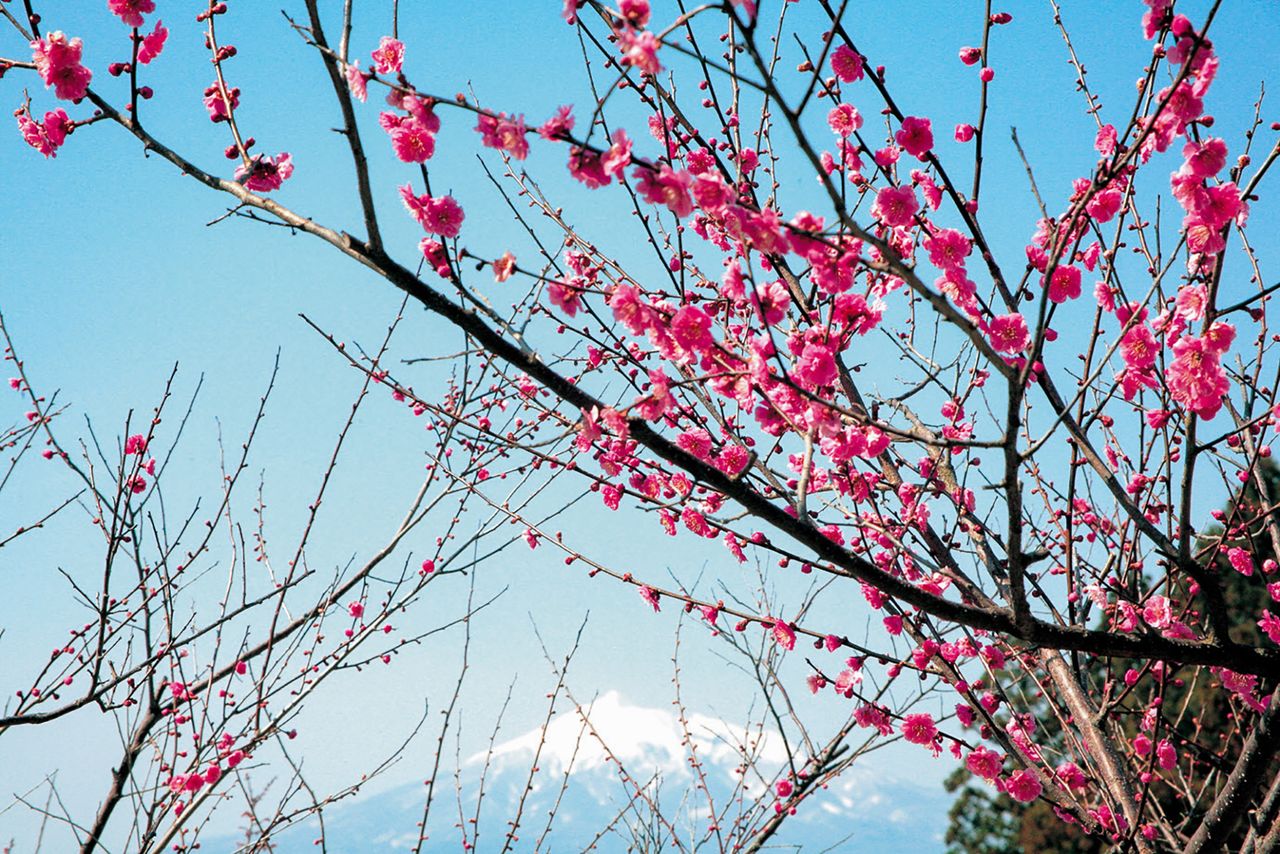
Ume in bloom, with Mount Iwaki in the distance. (Photo courtesy of the Goshogawara City Tourist Association)
Access: 20 min. by car from Goshogawara station on the JR Gonō line.
Morioka, Iwate Prefecture
Morioka Castle Ruins Park
Best viewing: late March to late May
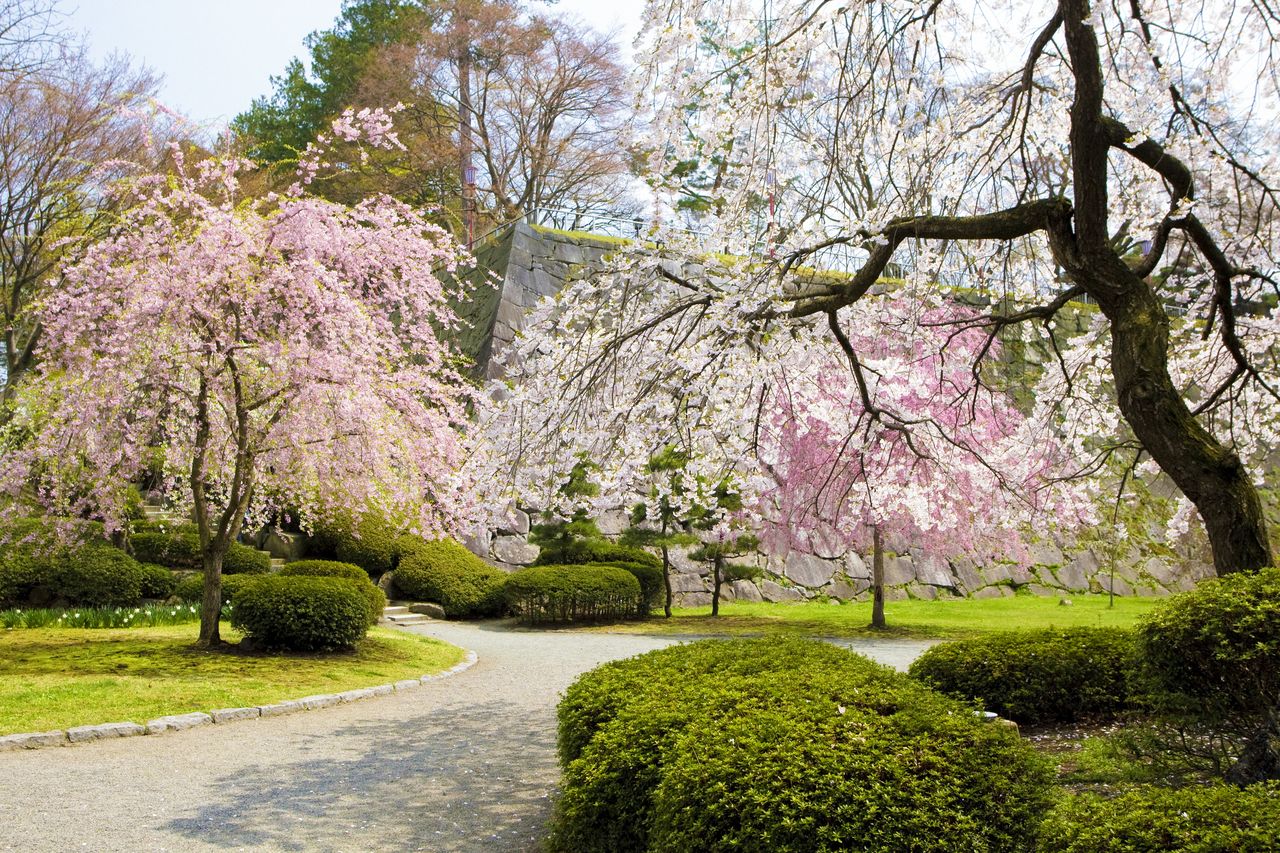
Weeping ume in bloom, with castle fortifications in the background. (Photo courtesy of the Iwate Tourism Association)
Morioka Castle Ruins Park, or Iwate Park, in the city of Morioka, occupies the grounds of Morioka Castle, the former stronghold of the Nanbu clan. The granite fortifications, made of naturally stacked stone and other masonry techniques, are among the most extensive in the Tōhoku region. The castle grounds are now a favorite spot for Morioka residents, and the ume grove in the park, with approximately 1,000 trees, is one of its feature attractions.
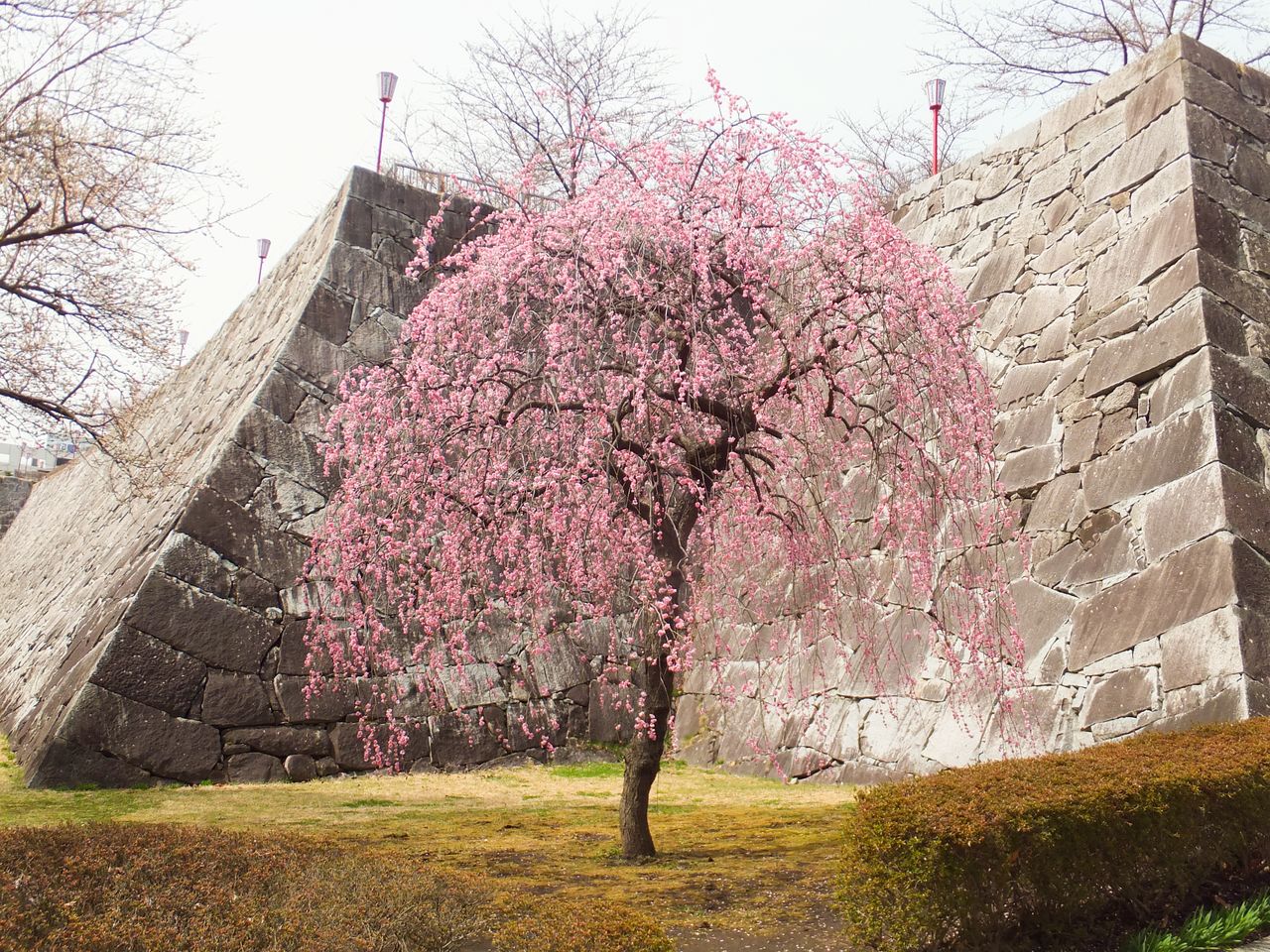
Fragrant ume in bloom on the castle grounds. (Photo courtesy of the Morioka Tourism and Convention Association)
Three species of ume, each with its distinctive charms, bloom here: Bungo ume, with beautiful crimson blossoms, shidare ume, a weeping variety with long, elegantly sweeping branches, and hakubai, white ume, whose small, pale flowers accent the spring landscape. The trees also present an attractive contrast against the mossy stones of the castle fortifications in the background.
In late April, after ume have passed their peak, sakura begin to bloom. Depending on the weather in a particular year, it’s sometimes possible to see ume and sakura blooming at the same time.
Access: 5 min. on the DenDen Mushi Morioka City Loop Bus from JR Morioka station. Get off at the Morioka Jōshi Kōen stop.
Yokote, Aomori Prefecture
The Ume Trees of Ōya
Best viewing: mid- to late April
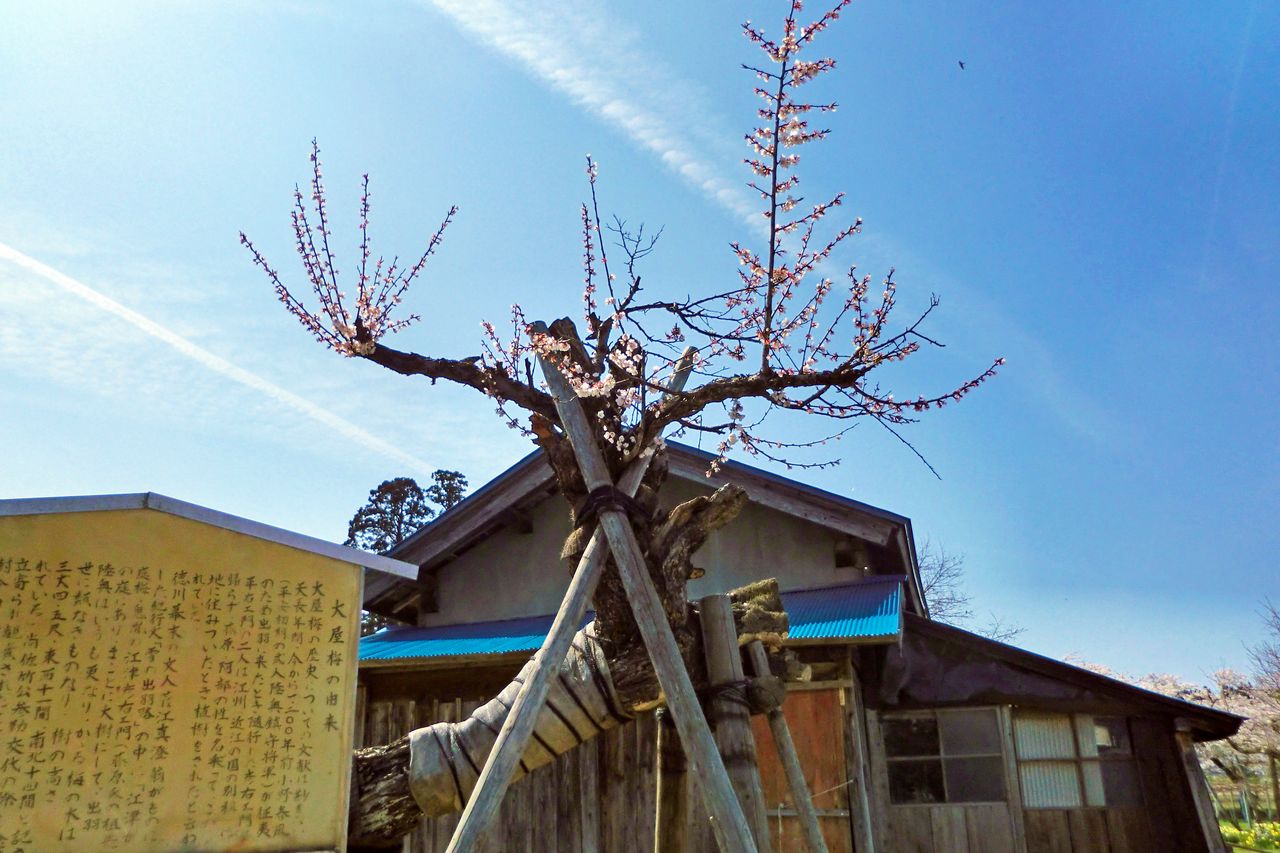
Ōya has been renowned for ume for nearly 1,200 years. The ume in the garden of the Ezu residence pictured here is said to be the original Ōya ume. (Photo courtesy of the Yokote City Tourism Association)
The Ōya district of Yokote in Akita Prefecture has long been known for its numerous ume trees. It’s said that about 1,200 years ago, when military commander Ono no Harukaze led an expedition to Tōhoku, two of his retainers decided to settle in Ōya and planted ume in the gardens of their compounds. Over the years, residents did the same, and now, while Ōya has no large groves of ume in public spaces, hundreds of ume bloom in private gardens in the district.
There were reputedly over 1,000 ume in Ōya 100 years ago, but today there are about 600. When the trees are blooming, there are pale pink flowers everywhere, and the air is filled with their fragrance. The ancient ume trees in the temple precinct of Shōdenji are an especially impressive sight, their beautiful flowers a reminder of centuries past.
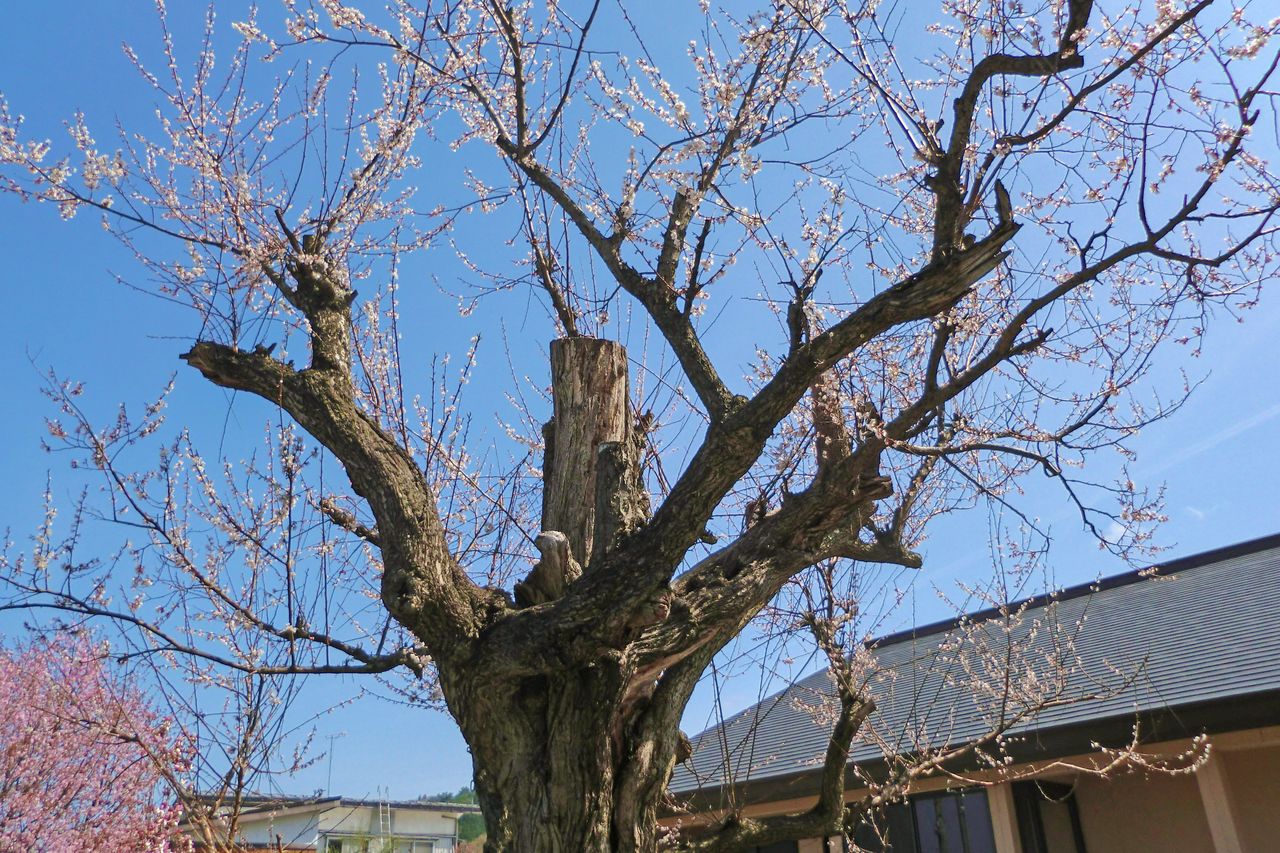
An imposing ume tree near the entrance to the temple Shōdenji. (Photo courtesy of the Yokote City Tourism Association)
Access: 15 minutes’ walk from Yanagita station on the JR Ōu Main Line.
Note: Best viewing dates may vary due to weather. Checking before you go is recommended.
(Originally written in Japanese. Reporting and text by Shoepress.)
tourism Aomori Tōhoku Akita Prefecture Aomori Prefecture Iwate Prefecture flower ume Goshogawara